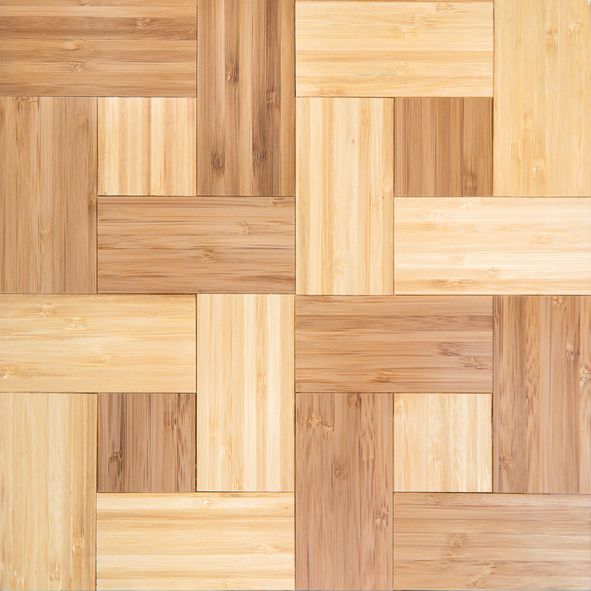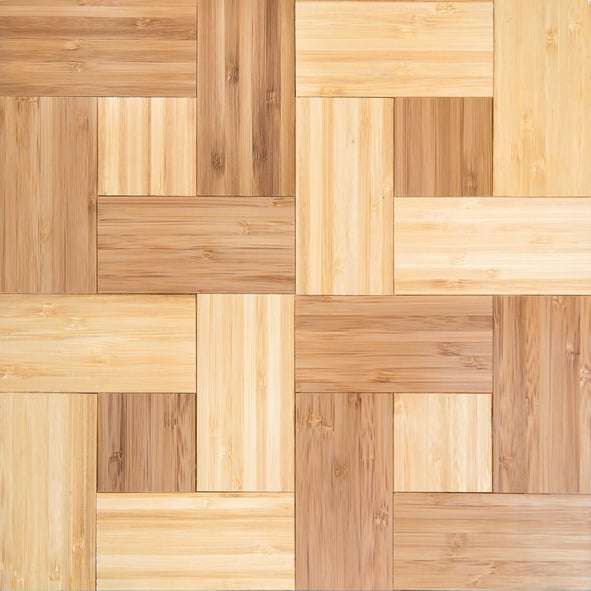Bamboo flooring continues to increase in popularity due to its unique strength and elegant finish. One common problem homeowners experience is the accumulation of dried adhesive on the floor’s surface during installation. Failure to properly remove this glue while it’s still wet can lead to permanent finish damage. Below are seven steps to help you remove dried adhesive/glue from your bamboo flooring.

- Bostik Best Ultimate Adhesive Remover: Available in a 32-ounce bottle, this liquid product is designed to remove wet and dried adhesives from the flooring. If you choose to use Bostik’s liquid adhesive remover, make sure you pour only a small amount of solution directly onto the dried glue.
- Bostik Ultimate Adhesive Remover Towels: Manufactured with convenience and utility in mind, Bostik’s towels are pre-soaked and ready to use. Complete step one by removing a towel and squeezing a small amount of solution onto the dried adhesive.
2) Let the adhesive remover sit for approximately 15 minutes. A short waiting period allows the solution to permeate the adhesive and facilitate removal. Make sure you do not let the solution (or any liquid, for that matter) remain on your floors for an extended period of time, or you could end up with unsightly marks on your floors.
3) Wipe the application site with a cloth. This should be done right away to absorb the adhesive remover fully. Ideally, it would help if you used a dry cloth with the following features:
- Gentle
- Soft
- Absorbent
4) Reapply the adhesive remover to the same spot. While this step may seem redundant, a second application is recommended to ensure that all glue is thoroughly removed.
5) Allow the product to sit for approximately 1 minute. Once again, it is important to allow the adhesive remover to penetrate any remaining residue.
6) Use a Mr. Clean ® Magic Eraser ® to remove the dried glue. Mr. Clean® Magic Eraser is known for its ability to remove the toughest adhesive residue from glass, household items, and floors. Be sure to protect your skin during the removal process.
7) Thoroughly clean the application site and surrounding area. Once you have completely cleaned the affected floor area, make sure there is no remaining adhesive. Also, scan your floors to ensure there are no oily residue traces – an annoyance that can sometimes arise after applying adhesive remover. If you discover any oily residue, you should wipe it up right away, using a damp rag to help loosen the oily film. You should then thoroughly wipe down the area with a dry rag to ensure that any oil traces are absorbed.
What Should You Do If the Above Steps Fail?
Sometimes dried adhesives are so stubborn; they are immune to even the most thorough removal processes. In these cases, you may have to remove and replace the bamboo flooring plank. Or, as a final removal step, you can attempt to apply denatured alcohol to the dried adhesive to wear it down gradually. If you explore this measure, make sure you take the following precautions:
- Apply a small test spot on a hidden plank in a low-profile area before treating the affected area.
- Examine the test area to make sure the process does not remove the finish on your floors.
- Proceed with the application of denatured alcohol to the dried glue.
Solutions for All of Your Bamboo Flooring Needs
Want to educate yourself about bamboo flooring? There is no substitution for expertise when your bamboo floors require attention. The best way to address your bamboo flooring problems is to seek a leading industry expert’s guidance. The team of professionals with Ambient Bamboo Floors has the tools and resources to help you safely address all of your bamboo flooring needs. For over 15 years, Ambient has been the nation’s most trusted provider of bamboo flooring. From the removal of dried adhesive to recommendations regarding removing and replacing a flooring plank, the Ambient team has the expertise to help you properly care for your bamboo floors. If you have to resist any questions, please contact us!
Last update of the article: 01/27/2021

About the Author
Jen is your go-to guru for crafting a cozy, green cocoon. 🪴 Her dive into sustainable building wasn’t just about saving the planet—it started as a mission to make family movie nights eco-friendly (and to ensure the popcorn was the only thing getting heated!). With a knack for breaking down the jargon, Jen turns eco-lingo into everyday language. Swing by the Green Living blog for a mix of earth-loving advice and home improvement hacks. Whether you’re just dipping your toes into green waters or you’ve been swimming in the deep end of DIY projects, Jen’s here to guide, giggle, and remind you that every eco-choice is a step towards a planet that thanks you… and maybe even sends a rainbow your way! 🌈


I have a Morning Pride bamboo floor. The floor is only 4 yrs old. The problem I have is I put an area rug underneath my table with a nion slip pad. I removed the rug and the pad and the pad left a full film in my floor that I cannot get off. How do I get this off and get my floor back??? Please help I’m going crazy over this. I tried everything.
Hi Dominick, sorry to hear about the problems with your bamboo floor. Have you tried contacting the manufacturer for advice? If you aren’t able to reach them, the first step is to determine if the damage on your floor is actually a residue that was left behind by the pad, or if the top coat of the finish was rubbed off as a result of friction between the pad and the floor (usually resulting in a cloudy finish). If there really is residue left behind on top of the floor, you can follow the steps above. However, if the top coat of the finish has been rubbed away (resulting in “cloudy” spots), your only option is to cut out and replace the planks. Hope that helps and good luck!
My installer has been leaving glue residue as he installs our bamboo flooring. The floors have a dark finish. He said he wants to use Goof Off to remove the residue once it has dried. I’m a little worried that it will mess up the finish. Is Good Off ok for bamboo flooring?
Hi August! Your installer will definitely want to take care not to let the glue dry on top of the planks, as this may damage your finish. Have you reached out to the manufacturer of your floor? We recommend doing this first to ensure you’re using a cleaner that is compatible with your finish. Best of luck!
I just got engineered bamboo floors installed a week ago and the installer did not wipe the off properly and I’m now left with a stained floor that nothing can remove the stains. I’m in tears right now because the floor looks horrible and I’m afraid it’s ruined and the only option is to remove it and replace. But I don’t have the money and patience to go through the stress all over again. Is there anything I can use to to remove the stains?
Hi Viviane, I’m so sorry to hear that. This is actually one of the made when gluing down hardwood and bamboo flooring. Have you reached out to your floor manufacturer for advice on how to clean the planks? On most polyurethane finishes with aluminum oxide, if you performed the steps listed above with the Magic Eraser and had no success, I’m afraid you may have to have the planks cut out and replaced. Your installer should provide this service to you free of charge if they created the issue, hopefully you have some planks remaining on hand from your same lot. We wish you the best of luck.
To Whom It May Comcern,
I’m in the process of getting my 18′ * 14′ bedroom being changed from carpet to bamboo flooring..
The person who is doing it , seems as if he doesn’t know what he’s doing, and got the the glue all over
the exposed area of the bamboo flooring. Now,I must say,” the glue has being removed but the mark is
still there..” What does one do in this case..?
Thanks for the help..
Hi Donna, I’m so sorry to hear that! If you have already tried the steps in our article above and they didn’t not remove the cloudy spots, I’d recommend reaching out to the manufacturer/brand of your floor for some final advice. If they can’t provide a solution I’m afraid your only option may be to cut out and replace the planks, I’m sorry. We wish you the best of luck!